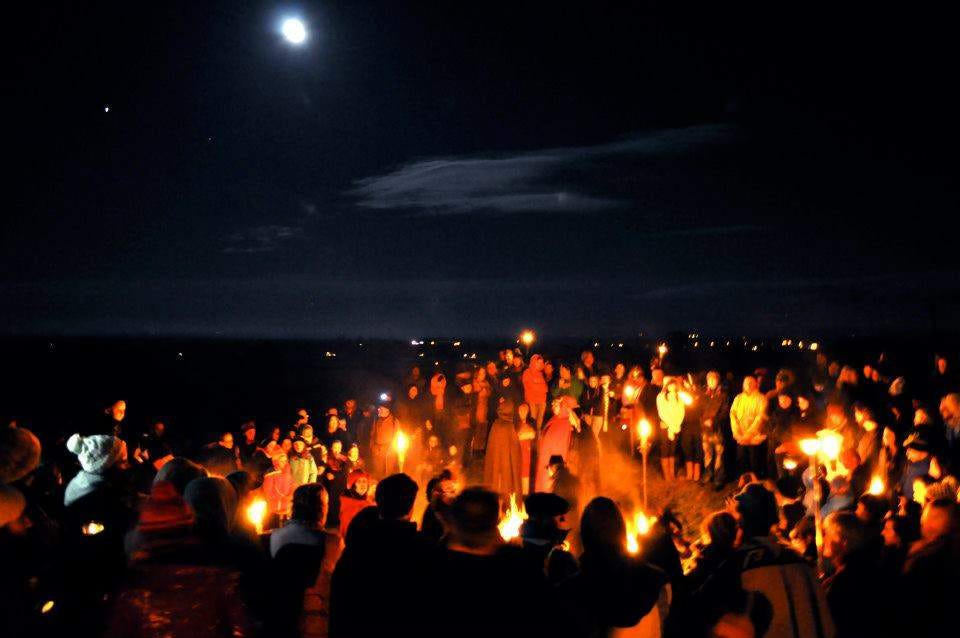When the Leaves Turn
Why Autumn Is the Perfect Season to Embrace Matriarchal Pagan Spirituality
As the air cools and the days shorten, autumn whispers a truth older than any calendar — that all things must transform to renew. In the hush between summer’s vitality and winter’s slumber, there is a sacred pause. It’s here, in this liminal season of release and reflection, that the call of the Mother — Her — feels the strongest.
The Season of Return
Pagan and matriarchal traditions have long viewed autumn not as an ending, but as a homecoming. The Earth draws her energy inward; trees shed what no longer serves them; creatures burrow and rest. This natural rhythm mirrors the divine feminine — cyclical, intuitive, nourishing, and wise.
To live matriarchally is to honor these cycles. It’s to see the sacred in decay as much as in bloom, to understand that power is not domination but nurturing — not in conquest, but in connection. The patriarchal world fears endings; the matriarchal one knows that endings are beginnings in disguise.
The Mother’s Lessons in the Harvest
Autumn is the season of the harvest — the time to gather, to give thanks, and to release. Matriarchal pagan spirituality teaches that gratitude is a form of devotion. When you light a candle, share a meal, or offer thanks to the land, you’re not performing ritual for its own sake — you’re participating in an ancient conversation with the Mother Earth who feeds and shelters you.
You can feel Her presence in the weight of apples, the scent of woodsmoke, and the golden twilight that stretches across the fields. She asks for nothing more than awareness — that you notice, that you listen.
Samhain: The Matriarch’s Threshold
At the height of autumn comes Samhain (pronounced sow-en), the ancient Celtic festival marking the new year in the Wheel of the Year. It’s a time when the veil between worlds thins — when we honor our ancestors and commune with the spirits of those who came before us.
In matriarchal pagan practice, Samhain is not about fear or ghosts, but about continuity. It reminds us that the Mother never truly dies; She changes form. Through death, She nourishes life. Through darkness, She prepares the soil for rebirth.
Lighting candles for the departed, setting an extra place at the table, or whispering gratitude to the foremothers are all ways to honor this sacred threshold. It’s a night of remembrance, release, and renewal — a night to feel the ancestral matriarchal line pulsing beneath your feet.
Reclaiming the Sacred Feminine
For those raised in patriarchal religions, embracing matriarchal spirituality in autumn can be an act of healing. The shift of seasons invites us to shed dogma like dry leaves — to reclaim the divine feminine within us all. In a matriarchal pagan path, divinity is not distant or male; it is immanent and embodied. Every woman, every tree, every grain of soil holds a spark of the same sacred force.
You might begin by honoring your ancestors — especially the women whose wisdom and resilience live within you. You might build a simple altar with fallen leaves, seeds, and stones. You might walk barefoot among the trees, whispering your gratitude to the Earth.
Why Autumn Calls the Matriarch Home
There’s something profoundly matriarchal about the turning of the wheel toward darkness. It’s an invitation to slow down, to tend hearth and heart, to gather your inner tribe. As light wanes, community and kinship — the cornerstones of any matriarchal practice — become essential.
This is not the sterile solitude of patriarchal asceticism. This is the warm, communal quiet of shared soup, shared stories, shared grief, and shared joy. Autumn is a time to be together, to nurture, to remember.
A Simple Beginning
To begin your matriarchal pagan journey this autumn, start small:
Create a gratitude ritual each evening — light a candle, speak three blessings aloud.
Forage or collect natural items that call to you — acorns, feathers, stones — and use them to build your seasonal altar.
Honor your maternal line — write the names of your mothers, grandmothers, and foremothers; say them aloud like a prayer.
Observe Samhain — spend time in quiet reflection, remembering those who came before and thanking them for the path they forged.
Practice release — write what you’re ready to let go of, and safely burn or bury it beneath the falling leaves.
Through these acts, you align with the rhythm of the Earth — the pulse of Her, the Eternal Mother — who shows us that surrender is not loss, but liberation.
In the end, autumn reminds us what every matriarch already knows: power does not come from holding on, but from letting go. The Mother teaches that every leaf that falls feeds the roots below — that life, like love, is never truly lost, only transformed.


